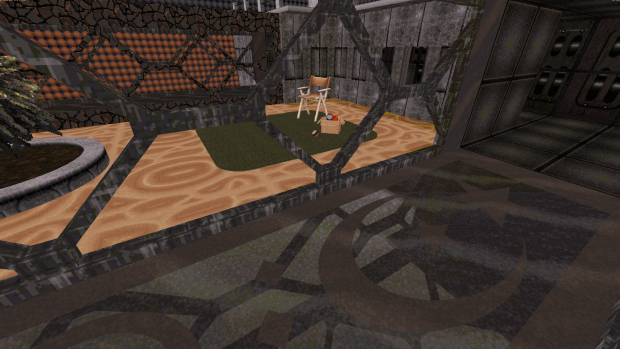Brahma is a 3D game engine with a rather retrofuturistic design, intended for small studios and solo developers. It's being written from scratch in C++ using standard Windows API and no third-party libraries. This technology introduces an entirely new class of low-latency real-time engines that make special timing requirements, treating frames as video fields with a target time budget of 2-4 ms each, down from 16-33 ms frame budgets normally seen in game engines. It evolves in a different way than other modern engines, rejecting conventional BSP, Z-buffer, floating-point coordinates, and most of the lame screen-space effects in favor of innovative and efficient techniques. The engine is non-Euclidean capable to some degree; also it supports true displacement mapping for sectors as a means to virtualize geometry that affects collisions. The engine is also carefully designed to be easy and convenient to develop for, yet versatile and adaptive to any needs.
A small test map with some multi-level structures making extensive usage of portals. This kind of architecture is still giving me some "hall of mirrors" artifacts, especially when it comes to complex-shape reflections. Like other "static" geometry, the glossy floor reflection is done with perfect hidden surface removal, what is a performance challenge for the current portal system, as it's still unable to merge adjacent rendering nodes correctly.
There's also a box filled with pool balls and drawn with correct Z culling, proving that voxels can be put really close to each other with little or no unwanted artifacts--also without Z-buffer intervention.






